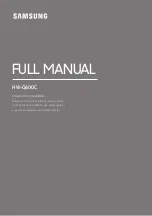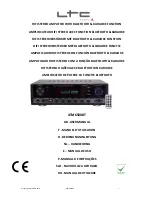
V4.2
200A AC/DC Dial Control TIG Welder 202KE
8785081
Visit www.princessauto.com for more information
11
a. If ventilation in the work area is poor, use an approved air-supplied
respirator. All the people in the work area must also have air-supplied
respirators.
b. Oxygen displacement can occur in confined areas when the shielding
gas fills the area and pushes out air.
2. Avoid positions that allow welding fumes to reach your face. Always attempt to
weld ‘upwind’ of the workpiece with the airflow across the face of the welder.
Airflow from behind may create a low pressure area in front of the welder and
draw the fumes to the person.
3. Ventilate the work area to remove welding fumes and gases. The fumes
and gases should be drawn away from the user.
a. Ventilation should be enough to disperse fumes, but not enough to
disturb the shielding gas or flame during welding.
b. Ventilation exhaust shall be directed to a non-work area to avoid
exposing other people to potential toxic or dangerous fumes.
c. Air removed from the work area by the ventilation system must be
replenished with fresh air to avoid oxygen starvation or a build-up of fumes
or gases. Only use air to provide ventilation. Any other combination of
gases may be explosive or toxic to people in the work area.
d. Ventilation methods that remove gas and fumes from the welding
point before they reach the welder’s face should be given preference.
4. Avoid welding in a work area that has vapours from cleaning, degreasing or any
spraying operations. The heat and light from welding can react with the vapour
and form irritating or potentially toxic gases. Wait for the vapours to disperse.
5. Consult the manufacturer's Safety Data Sheets (SDS) for instructions and
precautions about metals, consumables, coatings, cleaners and degreasers.
a. Do not weld on coated metals such as galvanized, lead or cadmium
plated steel, unless the coating is removed from the weld area. The
coatings and any metals containing these elements can give off toxic
fumes during the welding process.
b. Do not weld, cut or heat lead, zinc, cadmium, mercury, beryllium or
similar metals without seeking professional advice and inspection of the
welding area’s ventilation. These metals produce extreme toxic fumes,
which can cause discomfort, illness and death.












































